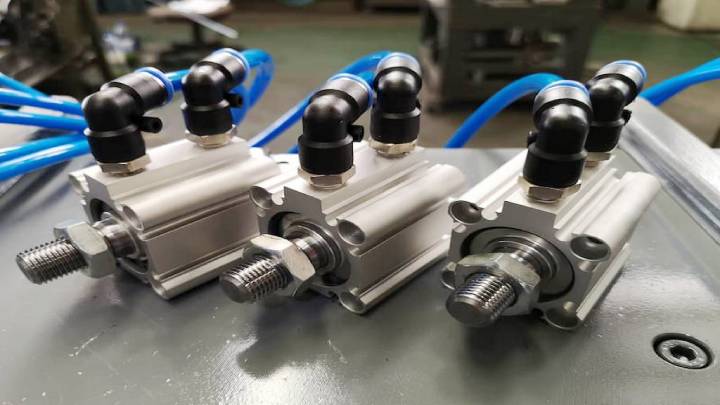Hydraulic systems play a crucial role in numerous industries, from construction and manufacturing to agriculture and mining. At the heart of these systems are hydraulic cylinders, essential components responsible for converting fluid power into mechanical force. However, like any mechanical component, hydraulic cylinders are prone to wear and tear over time, leading to reduced efficiency and potential breakdowns.
Hydraulic cylinder repair is a critical process that can save both time and money, ensuring the seamless operation of hydraulic machinery. In this article, we will delve into the importance of hydraulic cylinder repair, its common issues, and the steps involved in the restoration process.
Table of Contents
Importance of Hydraulic Cylinder Repair
Hydraulic cylinders are designed to withstand immense pressure and heavy loads, making them durable and reliable. However, continuous usage, extreme conditions, and inadequate maintenance can lead to various problems, such as leaks, rod scoring, and internal damage. Ignoring these issues can result in decreased performance, increased downtime, and costly repairs.
Prompt and proper hydraulic cylinder repair is vital for several reasons:
- Enhanced Efficiency: A well-maintained hydraulic cylinder operates efficiently, reducing energy consumption and optimizing overall system performance.
- Cost-Effectiveness: Timely repair and maintenance can prevent minor issues from escalating into major problems, saving substantial repair costs and extending the cylinder’s lifespan.
- Safety: Faulty hydraulic cylinders pose safety risks to operators and surrounding equipment. Repairing these issues promptly ensures a safer working environment.
Common Hydraulic Cylinder Issues
Before discussing the repair process, it’s essential to understand some common hydraulic cylinder problems:
Fluid Leaks: Leaking hydraulic cylinders not only waste hydraulic fluid but also lead to a drop in system pressure, affecting performance.
Seal Damage: Damaged seals allow contaminants to enter the cylinder, leading to premature wear and reduced efficiency.
Bent or Scored Rods: Misalignment or contact with external elements can cause bending or scoring of the cylinder rod, affecting its movement and sealing ability.
Piston and Cylinder Wall Damage: Scoring, pitting, or corrosion on the piston and cylinder walls can hinder smooth operation and compromise the cylinder’s integrity.
Overheating: Excessive heat generation can cause fluid degradation, leading to seal failure and reduced cylinder performance.
Hydraulic Cylinder Repair Process
The hydraulic cylinder repair process can vary depending on the specific issue and the cylinder’s complexity. However, some general steps are commonly followed:
Inspection and Diagnosis: The first step involves a thorough inspection of the hydraulic cylinder to identify the root cause of the problem. Technicians examine the cylinder for signs of damage, leaks, and worn-out components.
Disassembly: Once the issue is diagnosed, the cylinder is carefully disassembled to access its internal components. This step may require the use of specialized tools to avoid any further damage.
Component Replacement: Damaged or worn-out components, such as seals, O-rings, and piston rods, are replaced with high-quality, compatible parts to restore the cylinder’s functionality.
Cleaning and Honing: The cylinder’s interior surfaces are cleaned and honed to remove contaminants, corrosion, and surface irregularities, ensuring smooth movement of the piston.
Reassembly: After replacing components and cleaning, the hydraulic cylinder is reassembled with precise attention to detail.
Testing and Calibration: The repaired hydraulic cylinder undergoes rigorous testing to ensure proper functioning and adherence to manufacturer specifications. The pressure and load tests help validate the repairs.
Conclusion
Hydraulic cylinders are indispensable components of various hydraulic systems, and their efficient operation is crucial for optimal performance. Regular maintenance and prompt hydraulic cylinder repair can prevent minor issues from escalating into major problems, leading to reduced downtime and increased productivity.
Remember, engaging skilled and experienced professionals for hydraulic cylinder repair is essential to ensure that the repairs are carried out with precision and adherence to industry standards. By investing in proper maintenance and repair, businesses can prolong the life of their hydraulic cylinders and maintain a safe and efficient working environment.

